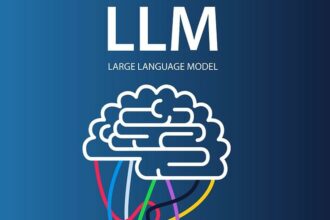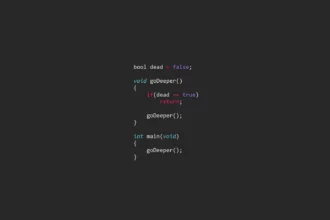Table of Contents
ToggleBest Open-Source LLM for Coding
The best open-source large language models (LLMs) for coding combine advanced programming capabilities, flexible deployment, and community-driven improvements. Selecting the top model depends on specific coding needs, such as code generation, debugging, or integration with developer tools.
Key Features of Open-Source Coding LLMs
- Accessibility and Transparency: Open-source LLMs are widely accessible and promote transparency. Developers can inspect and modify the codebases freely.
- Community Contributions: They benefit from community-driven optimizations such as model quantization, pruning, and efficient deployment methods which improve performance.
- Programming-Focused Training: These models are trained on extensive programming-related datasets including source code, documentation, and developer discussions to improve code understanding and generation.
- Customization and Ownership: Users retain full control over the model. They can tune it for their specific applications and maintain self-hosted deployments, avoiding vendor lock-in.
Advantages and Challenges
| Advantages | Disadvantages |
|---|---|
|
|
Top Open-Source LLMs for Coding in 2025
Llama 3.3 by Meta AI
- Up to 70B parameters, supports 8+ languages.
- Context windows up to 128K tokens for long documents.
- Optimized for code generation, debugging, and instruction following.
- Uses advanced Grouped Query Attention for efficiency.
- Community-focused but commercial license restricts derivative uses.
DeepSeek V3 by Anthropic
- 671 Billion parameters with Mixture of Experts (MoE) architecture.
- Offers excellent coding, reasoning, and math capabilities.
- 128K token context supports deep understanding of complex code.
- MIT licensed but requires expensive H100 GPUs.
Mistral AI
- Models like Mistral 7B and Mixtral 8x7B with MoE designs.
- Apache 2.0 license permitting commercial use.
- Strong at reasoning, code completion, and chatbots.
- Designed for on-device and cloud deployment.
Other Notable Models
- Qwen2.5-Max (Alibaba): Large token training, excels in coding benchmarks.
- Gemma 2.0 Flash (Google): Multimodal APIs with coding and instruction strengths.
- Doubao-1.5-Pro (ByteDance): Cost efficient, extended context windows (32K, 256K tokens).
- StarCoder (BigScience): Focus on public-code training with sequence-to-sequence architecture.
- Polycoder (Anthropic): Supports 50+ languages, strong polymorphic code gen.
- Phi 3 Mini (Microsoft): Balanced cost and speed for smaller-scale coding assistance.
- Tabnine: Integrated in IDEs, local processing for privacy.
- Falcon 3 / Falcon 180B: Multilingual, scientific and coding optimized.
Use Cases for Coding LLMs
- Automated code generation and completion.
- Bug detection and code optimization assistance.
- Code search and multi-language code understanding.
- Execution of complex instructions and maintaining long code context.
- Integration with AI chatbots and virtual coding assistants.
Licensing and Deployment Considerations
Models mainly use permissive licenses like Apache 2.0 and MIT. Some impose commercial restrictions—Meta Llama 3 is notable here.
Deployment styles vary:
- Local self-hosting for full control.
- Cloud-based services via platforms like Alibaba Cloud or HuggingFace.
- Integration with tools such as Ollama or n8n for workflow automation.
Evaluation and Access
No single “best” model fits all purposes. Performance varies by coding task, model size, and hardware.
Benchmarks track metrics in code generation, reasoning, and context management rigorously. The Hugging Face leaderboard is a popular resource.
Developers can access models through:
- Hugging Face hub for community-driven releases.
- Ollama for easy local deployment.
- Automated workflows integrating multiple LLM endpoints.
Read — Top Local LLMs for Coding: Models, Use Cases, Performance, and Tools
Key Takeaways
- Open-source coding LLMs offer transparency, customization, and cost control.
- Leading models like Llama 3.3 and DeepSeek V3 offer state-of-the-art coding assistance.
- Licensing must be checked carefully; some models restrict commercial derivative use.
- Model selection depends on technical requirements: scale, context window, budget, and deployment preferences.
- Community contributions continuously improve open-source models, making them viable alternatives to corporate offerings.
Choosing the Best Open-Source LLM for Coding: Unlocking AI’s Coding Sidekick
So, what’s the best open-source large language model (LLM) for coding? The short answer: it depends on what sparks your coding mojo. But if you want a leader among the pack, models like Llama 3.3 by Meta AI, Mistral AI’s lineup, and StarCoder are some of today’s hottest open-source options. Each shines in speed, accuracy, or flexibility, and together, they offer a powerful recipe for any coder’s toolkit.
Hang tight as we take a lively stroll through the fascinating world of open-source LLMs tailored for coding. This post unpacks the benefits, challenges, remarkable contenders, and real-life uses of coding LLMs – spiced up with tools like Sourcegraph’s Cody that let you mix and match models on the fly.
The Evolution of AI Coding Assistants: From Sidekick to Co-Pilot
Remember when programming meant one vetting every single line of code individually with a skeptical eye? That’s still a thing, but now, AI acts as a blazing-fast, non-judgmental pair programmer. Instead of just completing code snippets, modern AI assistants analyze, debug, and even optimize your projects in real time. Tools built on large language models (LLMs) have made coding fluid, collaborative, and downright fun.
Leading proprietary models like OpenAI’s GPT-4o, Google’s Gemini, and Anthropic Claude usually hog the spotlight. But open-source alternatives are catching up rapidly, offering unique perks like full control, cost savings, and the freedom to tweak models to your liking.
Open-Source Coding LLMs: Why They Matter
The rise of open-source LLMs changes the game for developers. Are you curious why? Because open source puts power back into your hands:
- Full ownership and control: You can customize, retrain, and deploy models wherever you want, avoiding vendor lock-ins.
- Transparency: Peek under the hood. No mysterious black boxes here.
- Community-driven innovation: Enthusiasts regularly improve performance via pruning, quantization, and new training data.
- Cost predictability: No pay-per-API-call rollercoaster. Just infrastructure costs you manage.
- Longevity: Host your environment without worrying about sudden end-of-support or pricing hikes.
That said, the quality gulf between open-source and commercial behemoths shrinks every day. Yet, some drawbacks remain:
- Open-source models may not match proprietary performance on certain tasks.
- There’s an ongoing risk of adversarial attacks or misuse.
- Licenses vary from permissive Apache 2.0 to more restrictive commercial terms like Meta’s Llama 3, so check before deploying commercially.
Meet the Contenders: Top Open-Source Coding LLMs in 2025
Welcome to the show! Here’s a lineup of the cream of open-source LLMs designed for coding, each with its unique flavor and use cases.
1. Llama 3.3 by Meta AI
- Massive — boasting 70 billion parameters across models scaling from 1B to 405B.
- Supports eight languages including English, Spanish, Hindi, and German.
- Handles colossal context windows — up to a whopping 128k tokens — brilliant for long codebases or detailed conversations.
- Optimized for instruction-following, so it’s great at understanding coding commands.
- Built-in responsible AI safeguards like Llama Guard 2 and Code Shield.
- Key uses: general text generation, code comprehension and generation, multilingual applications, and chatbot assistants.
- Heads-up: The commercial license restricts some derivative use. So, it’s not quite a free-for-all.
2. DeepSeek V3 by Anthropic
- Arguably a behemoth at 671 billion parameters combined with a Mixture of Experts (MoE) architecture.
- Selective activation conserves compute without sacrificing performance.
- Excels at creative coding, complex math, reasoning, and summarization.
- Offers an eyebrow-raising 128k token context window, perfect for intricate code contexts.
- Freely accessible under the MIT license, meaning wide freedom.
- Suited for enterprises demanding top-tier AI for massive-scale projects.
- Note: Requires hefty GPU horsepower (think NVIDIA H100s). Not for the faint of budget.
3. Mistral AI (7B and Mixtral Models)
- Open-source heavyweight supporting full commercial use via Apache 2.0 licensing.
- Impressive speed and reasoning capabilities optimized for chatbots, code completion, and summarization.
- Mixtral models use MoE for efficient compute, sparking top performance without a pricetag on compute.
- Great for cloud and on-device AI deployment, offering flexibility to adapt to various environments.
4. Qwen2.5-Max (Alibaba Cloud)
- Competes toe-to-toe with GPT-4 and Claude 3.5 Sonnet.
- Trained on 20+ trillion tokens with MoE magic for selective parameter activation.
- Strong in rigorous benchmarks like MMLU-Pro and LiveCodeBench.
- Accessed through Alibaba Cloud platforms, blending accessibility with power.
5. StarCoder (BigScience Project)
- Models size from 3B to 15B parameters, built explicitly for code.
- Sequence-to-sequence structure fine-tuned on public code repositories.
- Continuously improving, emphasizing code quality.
- Known for its open collaborative roots, inviting community tuning.
Other Notables
- Polycoder (Anthropic): Perfect for multi-language coding across 50+ languages.
- Phi 3 Mini (Microsoft): Small but mighty, balancing speed and cost-effectiveness on modest hardware.
- Falcon 3 and Falcon 180B: Multilingual models optimized for coding and scientific tasks.
- Doubao-1.5-Pro (ByteDance): Cost-effective with massive 256k token context.
- Tabnine: Tried-and-true assistant integrates locally with privacy-conscious developers.
How LLMs Actually Help You Write Code
At their core, these models predict the next code token you want based on your input. They’re trained on massive datasets filled with real-world code, documentation, and developer chatter. This background helps them generate context-aware, syntax-accurate, and framework-consistent snippets that don’t just autocomplete words but genuinely assist in coding logic and debugging.
Fancy debugging? Ask your LLM assistant to spot and fix bugs. Need comprehensive unit tests? They got you. Want explanations for cryptic code? Just chat. This conversational AI-co-pilot dynamic boosts productivity, lessens errors, and accelerates learning for developers of all experience levels.
Benchmarks: Who’s Winning the AI Coding Olympics?
Performance comparisons happen on standardized tests like MMLU, BigCode Bench, EvalPlus, and Chatbot Arena Leaderboard. Here, proprietary titans such as GPT-4 Turbo often lead, with open-source challengers like Llama 3, Claude 3.5 Sonnet, and Gemini 1.5 closing fast.
Benchmarks assess code generation accuracy, logical reasoning, debugging skills, and multi-step problem solving. They reveal strengths and weaknesses; for example:
- GPT-4 and GPT-4o: Top rankers in both accuracy and versatility.
- Claude 3.5 Sonnet: Nearly as sharp as GPT-4 but focused on ethical AI and reliability.
- Google Gemini 1.5: More factual but occasionally less creative in code generation.
- Mistral AI: Blistering speed, though with shorter context windows.
Integrating Open-Source LLMs with Sourcegraph Cody
Cody brings seamless integration with popular IDEs such as Visual Studio Code, IntelliJ IDEA, PyCharm, WebStorm, and NeoVim. It lets developers toggle between multiple LLMs, combining their strengths for better accuracy, faster completions, or balanced performance.
To get started, just add the Cody extension to your IDE, then pick your favorite LLM from the drop-down menu. Want a speedy response with decent accuracy? Go for Mistral. Need in-depth, creative coding help? Switch to Llama 3.3 or DeepSeek V3. Cody supports OpenAI’s GPT, Google Gemini, and Mistral, among others, making your coding assistant toolbox rich and versatile.
Use Cases Where Open-Source Coding LLMs Shine
- Automated code generation: Accelerate creating new code, prototypes, and scripts.
- Debugging assistant: Highlight and fix bugs with AI-powered analysis.
- Code refactoring and optimization: Clean up legacy code effortlessly.
- Writing unit tests: Generate comprehensive tests to improve software quality.
- Code search and comprehension: Get explanations and summaries of complex functions.
- Multilingual coding: Work smoothly in diverse programming languages with unified support.
- Handling large contexts: Manage and analyze massive codebases thanks to expansive token windows (e.g., 128k tokens in Llama 3.3).
- Function calling and AI chatbots: Enabling interactive coding assistants capable of deeper integrations.
Licensing and Deployment: What You Need to Know
Open-source coding LLMs usually come with licenses like Apache 2.0 or MIT — permissive ones that encourage commercial use. But there are exceptions, especially with big names like Meta’s Llama 3, which has some commercial restrictions.
You can deploy these models locally, on private servers, or in cloud environments like Ollama or via APIs that plug into automation tools like n8n. This flexibility ensures you decide the sweet spot between control, cost, and convenience.
So, Which Open-Source Coding LLM Should You Pick?
The best open-source LLM for coding really boils down to your project’s needs:
- Need massive context handling and multilingual support? Llama 3.3 is your go-to workhorse.
- Seeking cutting-edge coding accuracy and scale with corporate-grade safeguards? DeepSeek V3 or Claude 3.5 Sonnet shines here, albeit with heavy hardware requirements.
- Looking for fast, efficient models with commercial freedom? Mistral AI models combine speed with openness.
- Your budget is tight, but you want solid code assistance? Phi 3 Mini or smaller open-source models like StarCoder or Polycoder fit just fine.
Keep in mind, combining models via assistants like Cody can give you the best of all worlds, switching according to task complexity and project phase.
Final Takeaway: The AI Coding Revolution is Open to All
Open-source coding LLMs represent an exciting frontier where developers gain ultimate freedom to harness AI’s power. With democratized access to advanced AI, greater transparency, and vibrant community innovation, these models level the playing field and foster creativity. Whether you’re an indie developer, a startup, or an enterprise, exploring and adopting these open-source coding copilots might just turbocharge your workflow without breaking the bank.
So, ready to shake hands with your AI pair programmer? Dive into Llama 3.3, tinker with Mistral, or engage StarCoder. And when in doubt, let your friendly neighborhood Cody swap out the models on the fly.
Quick Links for the Curious Coder
- Sourcegraph Cody – AI Coding Assistant
- Meta Llama 3
- Mistral AI
- Anthropic DeepSeek (Claude lineage)
- StarCoder
- Hugging Face Models Hub
Which open-source LLMs are best suited for coding tasks?
Meta’s Llama 3 and Mistral AI Mixtral models are notable open-source LLMs designed for coding. These models come in various sizes and are trained on code-related data, making them suitable for code generation and analysis.
How does Sourcegraph Cody utilize multiple LLMs for coding assistance?
Sourcegraph Cody combines various large language models along with advanced code search and analysis. This approach enhances developers’ understanding and supports tasks like real-time code generation and debugging across programming languages.
What features make GPT-4 a leading model for coding compared to others?
GPT-4 offers a large parameter size (up to 1 trillion) and big context windows, enabling it to handle complex code generation and understanding. It supports multiple programming languages and integrates with tools like GitHub Copilot for advanced coding assistance.
Can open-source LLMs match proprietary models like GitHub Copilot in coding tasks?
Open-source models like Llama 3 and Mistral AI are competitive in many coding scenarios. However, proprietary models often benefit from more extensive fine-tuning and integration features, giving them an edge in productivity and specialized tasks.
How do LLMs improve code quality and developer productivity?
LLMs assist by generating code snippets, providing real-time feedback, identifying bugs, and suggesting refactoring. They understand syntax and coding styles, allowing developers to write better code faster while learning from suggestions.




